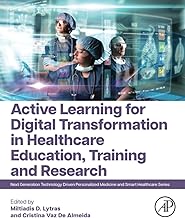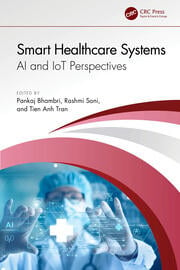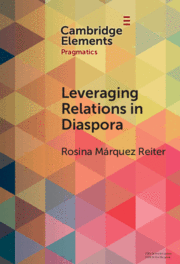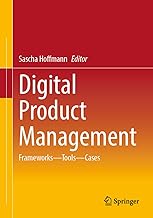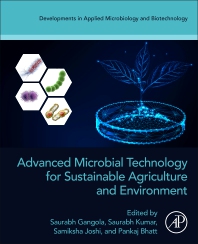
Book
Advanced Microbial Technology for Sustainable Agriculture and Environment
ISBN : 9780323950909
Author : Saurabh Gangola
Publisher : Academic Press
Year : 2023
Language : English
Type : Book
Description : Table of contents Cover image Title page Table of Contents Copyright Contributors Chapter 1. Recent molecular and omics approaches to study rhizosphere functioning Introduction Techniques for fingerprinting Omics approaches Recent omics methodologies to study rhizosphere dynamics Metagenomics Metaproteomics Metatranscriptomics Metametabolomics Challenges linked with multi-omics analysis of rhizosphere Conclusions Chapter 2. Role of psychrophilic and psychrotolerant microorganisms toward the development of hill agriculture Introduction Hill agroecosystems and problems associated with hill agriculture Influence of biotic and abiotic factors on hill agriculture productivity Psychrophilic microorganisms and their adaptation mechanisms Applications of psychrophilic microbes in reclamation of soil health Conclusion Chapter 3. Remediation of heavy metals by rhizospheric bacteria and their mechanism of detoxification Introduction Biological availability of metals in soil Heavy metals and ecotoxicity Challenges and possible solution for heavy metal detoxification Bioremediation The urgency for metal bioremediation Mechanism of heavy metals detoxification using microorganisms Use of recombinant rhizobia for bioremediation Use of metallothionein and phytochelatins for metal sequestration Conclusion Chapter 4. Microbial exopolysaccharides and their application for bioremediation of environmental pollutants Introduction Types and chemical composition of EPS Biosynthetic pathways General pathway Biosynthesis by sucrase enzyme Wzx/Wzy dependent pathway ABC transporter pathway Synthase-dependent pathway Applications of microbial polysaccharide for environmental pollutant remediation Conclusion Chapter 5. Insight into enzyme assisted degradation of environmental contaminants Introduction Oxidoreductase Oxygenase Monooxygenase Dioxygenase Laccase Peroxidase Lignin peroxidase Manganese peroxidase Horseradish peroxidase Hydrolase Lipase Cellulase Carboxylesterase Phosphotriesterase Haloalkane dehalogenases Enzyme-based tools and advanced techniques Genetic engineering Enzyme engineering Enzyme immobilization Conclusion Chapter 6. Technological advancement in tool and technique used for biodegradation analysis Introduction Bioinformatics tools Pathway prediction systems for biodegradation Next-generation sequencing method Techniques used in biodegradation studies Fourier transform infrared spectroscopy High-pressure liquid chromatography Gas chromatography-mass spectrometry analysis Gel permeation chromatography Nuclear magnetic resonance spectroscopy Scanning electron microscopy Another method used to monitor biodegradation of bioplastics Summary Conclusion Chapter 7. Role of hidden microbes in sustainable agriculture Introduction Various kinds of microbes found in association with plants Methods to study microbes associated to plants Role of microbes in promoting sustainable agriculture Efficient delivery methods of beneficial microbes to the crops Conclusion Chapter 8. Rhizosphere engineering for sustainable agriculture Introduction Rhizosphere and rhizosphere engineering Rhizosphere engineering through plant growth–promoting rhizobacteria How PGPR work in rhizosphere to enhance plant productivity? Biocontrol of plant pathogens Production of siderophores Production of lytic enzymes Chitinase Protease Glucanase Antibiosis Induction of host resistance Regulation of ISR and SAR signal transduction pathways Conclusion and future prospects Chapter 9. Role of microorganisms in agricultural waste management Introduction Components of agricultural waste Microbes involved in agricultural waste management Chapter 10. Tracking of soil microbial inoculates for sustainable agriculture Introduction Methods used for detection of microbial population Terminal restriction fragment length polymorphism analysis Polymerase chain reaction Denaturing gradient gel electrophoresis/temperature gradient gel electrophoresis Random amplified polymorphic DNA and DNA amplification fingerprinting Amplified ribosomal DNA restriction analysis Amplified fragment length polymorphisms Fluorescent in situ hybridization Ribosomal intergenic spacer analysis DNA Microarray Technologies Molecular biosensors Nucleic acids–based stable isotope probing Pyrosequencing and metagenomic libraries Conclusion Future prospects Chapter 11. Role of plant growth–promoting rhizobacteria in sustainable agriculture Introduction Different taxa identified as PGPR Mechanisms of action of PGPR Role of PGPR in sustainable agriculture Practical constraints in bringing from lab to land Tips to get a good response to PGPR application Precautions before PGPR application Future line of work Chapter 12. PGPR-mediated mitigation of biotic and abiotic stress in plants Introduction Plant growth–promoting rhizobacteria The role of rhizospheric microbes in plant stress tolerance The role of plant growth–promoting bacteria Plant-associated fungi confer stress tolerance to plants Applications of PGPR Mechanism shown by PGPR Conclusion Chapter 13. The future of PGPR-based plant growth promotion and bioremediation technologies Introduction Potential roles of PGPR for sustainable agriculture Latest advancements in the application of PGPR Current challenges in PGPR-based bioformulation Commercialization of PGPR In future, works can be focused on Conclusion Chapter 14. Microbial remediation for environmental cleanup Introduction Ex situ techniques In situ bioremediation techniques Permeable reactive barriers Factors affecting microbial bioremediation Site characterization and selection Metal ions and toxic compounds Microbial bioremediations Mechanism of the bioremediation Function of biofilms in the process of bioremediation Microbial enzymes used in bioremediation Bioremediation using microbial bioreactors Microbial bioreactors in bioremediation Conclusion and future prospects Index


